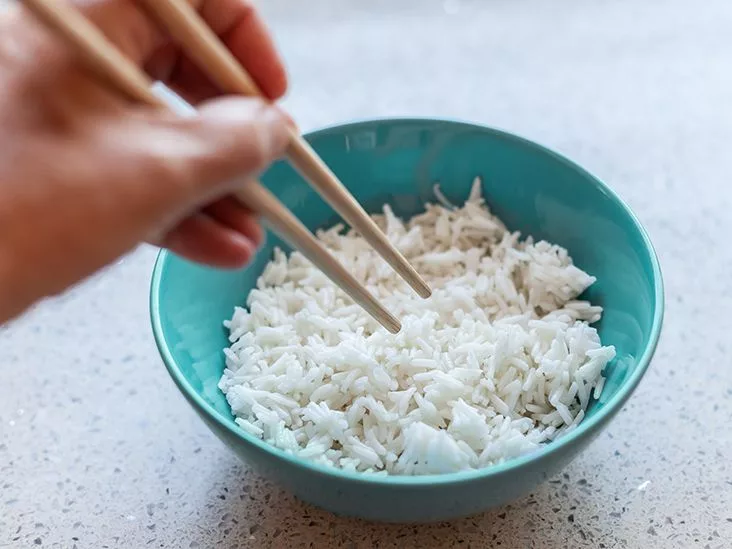Ever opened your fridge, saw a lonely bowl of rice, and thought, “I’ll just microwave it for lunch”? You’re not alone. That quick fix can feel like a lifesaver, but there’s a hidden guest you might be inviting to the table – reheated rice syndrome. In a nutshell, it’s a form of food poisoning caused by the sneaky Bacillus cereus bacterium that loves to hide in rice that’s been left out or stored the wrong way. Below is everything you need to know, from the science behind those nasty tummy ticks to simple tricks that keep your leftovers safe and delicious.
What Is It?
Reheated rice syndrome (sometimes called fried rice syndrome) is a type of food‑borne illness you can get after eating rice that’s been stored improperly and then reheated. The culprits are Bacillus cereus spores – tiny, heat‑resistant life forms that survive cooking and spring to life when the rice sits in the “danger zone” of 40‑140 °F (4‑60 °C). When they multiply, they release toxins that can make you feel very ill, usually within a few hours.
Definition & Other Names
The condition goes by several names: reheated rice syndrome, fried rice syndrome, and rice poisoning. All point to the same problem – toxins from B. cereus that aren’t destroyed by reheating.
The Culprit: Bacillus cereus
What makes B. cereus especially tricky is its ability to form spores. Those spores can survive boiling water, so even if you “heat it up again,” the bacteria can stay alive and keep producing toxins. According to Healthline (2025), the bacteria can cause two distinct syndromes – an emetic (vomiting) type and a diarrheal type – depending on the toxin it releases.
How It Differs From Other Food‑Poisoning Bugs
Unlike Salmonella or E. coli, which are wiped out by proper cooking temperatures, B. cereus spores are built to survive. That’s why you can’t simply “cook out” the problem; you have to prevent the spores from germinating in the first place.
How Does It Happen?
Picture this: you finish a big pot of rice, leave it on the counter while you binge‑watch a series, and later toss it into the microwave. Sound familiar? That pause is where the magic (or mischief) happens.
The Danger Zone
Rice becomes a breeding ground when it lingers in the 40‑140 °F range for more than two hours. In that sweet spot, spores wake up, turn into active bacteria, and start spewing toxins. The longer the rice sits, the higher the risk.
Common Scenarios
- Leftover rice cooling on the kitchen counter for hours.
- Fried rice made from rice that was cooked the day before and left at room temperature overnight.
- Reheating rice in the microwave without ensuring it’s steaming hot throughout.
Mini‑Case Study: TikTok‑Viral 2025 Incident
In early 2025 a TikTok video showed a medical student dramatically vomiting after reheating a bowl of rice that had sat out for eight hours. The clip sparked a flood of comments worrying about “fried rice syndrome.” Experts later clarified that the rice had indeed been stored too long, confirming the real risk behind the hype Mashable reported.
Why Reheating Often Doesn’t Fix It
Even if you heat the rice to a sizzling 75 °C (165 °F), you may kill the active bacteria but not the heat‑stable toxins already produced. Those toxins are the real troublemakers, and they can survive a microwave blast just fine.
Symptoms To Watch
If you’ve ever wondered what “rice poisoning symptoms” feel like, here’s the rundown. Most people experience mild to moderate discomfort that clears up within a day, but it can be unsettling.
Two Clinical Patterns
- Emetic type: Sudden nausea and vomiting, often within 30 minutes to 6 hours after eating. You might feel like you’ve been hit by a wave of sea‑sick nausea.
- Diarrheal type: Watery diarrhea, abdominal cramps, and sometimes low‑grade fever. Symptoms usually appear 6‑15 hours post‑meal.
Typical Timeline & Duration
The good news? Most cases resolve on their own within 24 hours. According to the NHS, symptoms rarely last more than a day, and severe dehydration is uncommon in healthy adults.
Higher‑Risk Groups
Kids, the elderly, and anyone with a weakened immune system are more vulnerable. If the illness drags on past 48 hours, or if you notice signs of dehydration (dry mouth, dizziness), it’s time to seek medical help.
Diagnosis & Treatment
Most doctors don’t need fancy tests; they’ll base the diagnosis on your recent meals and symptoms. Still, in a hospital setting, they might request a stool culture to confirm B. cereus presence.
Home Care Tips
- Stay hydrated – sip water, oral rehydration solutions, or clear broth.
- Rest and let your digestive system settle.
- Eat bland foods (toast, bananas, rice porridge) once you can keep liquids down.
- Over‑the‑counter anti‑emetics can help, but only after checking with a pharmacist or doctor.
When IV Fluids Are Needed
Severe cases (rare) may require intravenous fluids, especially in children or elderly patients who can’t keep fluids down. Hospitals treat it just like any other acute gastroenteritis.
Preventing The Syndrome
Prevention is far easier (and cheaper) than dealing with the aftermath. Below are the steps you can take without turning your kitchen into a science lab.
Store Rice Right Away
Cool cooked rice as quickly as possible – ideally within one hour. Spread it out on a shallow tray, stir occasionally, then pop it into the fridge.
Quick‑Cool Method
Think of a pizza slice: the thinner it is, the faster it cools. Same idea for rice – a thin layer in a wide container loses heat faster than a deep bowl.
Safe Refrigerator Lifespan
For the freshest taste and lowest risk, aim to eat refrigerated rice within 24 hours. Healthline says it can be safe up to 48 hours if stored below 4 °C (40 °F), but beyond that the bacterial load starts to climb.
Reheat Only Once & Heat Through
When you’re ready to eat, heat the rice until you see steam rising from every grain – that’s roughly 75 °C (165 °F). Use a food thermometer if you have one; it’s the surest way to know you’ve hit the target.
When In Doubt, Toss It
If the rice smells sour, looks dry, or has been out for more than two hours, it’s safest to discard. It’s better to waste a few dollars than risk a night of misery.
Comparison Table: Fresh vs. Properly Stored vs. Improperly Stored Rice
| Condition | Storage Time | Risk Level | What to Do |
|---|---|---|---|
| Freshly cooked (served immediately) | 0 hrs | Very low | Enjoy! |
| Refrigerated within 1 hr, eaten within 24‑48 hrs | 1‑48 hrs | Low | Reheat to steaming hot. |
| Left out > 2 hrs or stored > 4 days | > 2 hrs / > 4 days | High | Discard. |
Balancing Benefits & Risks
We all love leftovers – they save time, reduce waste, and keep the fridge tidy. The key is to enjoy the convenience without taking unnecessary risks.
Why Leftovers Are Worth Keeping
Beyond saving money, leftovers can help you stick to a balanced diet. A bowl of leftover rice pairs perfectly with veggies, beans, or a quick stir‑fry, giving you a nutrient‑dense, low‑prep meal.
Batch‑Cook‑and‑Freeze Strategy
Cook a big pot of rice, cool it quickly, and freeze portions in airtight bags. Frozen rice stays safe for up to three months. When you need it, microwave straight from the freezer – no “danger zone” time.
Quick “Is My Rice Safe?” Checklist
- Was the rice cooled and refrigerated within an hour? – Yes → OK.
- Has it been in the fridge for more than 48 hours? – No → Still OK.
- Did you reheat it until it’s steaming hot throughout? – Yes → Safe.
- Any off smell or odd texture? – Yes → Toss it.
Quick FAQ Answers
Even though this isn’t a formal FAQ section, here are a few rapid answers to the questions that pop up most often.
Can reheated rice kill bacteria?
No. Reheating can kill active bacteria, but the heat‑stable toxins produced by B. cereus remain.
Does the microwave make rice safe?
Only if the rice reaches a uniform steaming temperature (> 75 °C). Stir halfway through to avoid cold spots.
How long can rice sit out?
More than two hours at room temperature raises the risk dramatically. Aim for under an hour.
Is “fried rice syndrome” a real medical term?
Yes. It’s widely used by food‑safety agencies to describe B. cereus food poisoning linked to rice.
Can other foods cause the same syndrome?
Absolutely. Pasta, potatoes, and any starchy food left in the danger zone can host the same spores, according to Singapore’s Food Agency.
Conclusion
Reheated rice syndrome may sound scary, but with a few simple habits you can keep it from crashing your meal plans. Store rice promptly, chill it fast, reheat it until it’s steaming, and always trust your senses. By treating leftovers with the same care you’d give fresh‑cooked meals, you’ll enjoy tasty, safe food without the unwanted surprise of a sudden tummy upset.
Got a rice‑storage tip that’s saved you? Or a story about a close call? Share it in the comments – we’re all ears! And if you’re looking for a printable “Safe Rice Checklist,” click the link below to download the free PDF. Stay safe, stay savvy, and happy cooking!


















Leave a Reply
You must be logged in to post a comment.